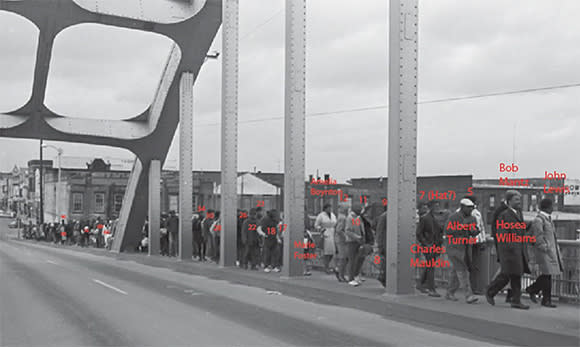This project is now in update mode. Check back regularly to see how things are progressing.
Preserve the History of Bloody Sunday
Create a digital history of Bloody Sunday with the McWhorter School of Building Science. To be used in Civil Rights education and museums, “Walking in the Footsteps of Civil Rights History" will use a Light Detection and Ranging Scanner to produce 2D and 3D models of the original site in Selma, Alabama.
The March 7, 1965 conflict known as Bloody Sunday occurred on the southern end of the Edmund Pettus Bridge, just south of the Selma, Alabama, city limits. The event triggered a significant turning point for the American Civil Rights Movement. Images captured on that day have been viewed by millions around the world.
However, visitors who attempt to visit the actual site of the conflict will discover a nearly unrecognizable landscape. Many of the buildings have been removed or significantly altered. Therefore, it is difficult for visitors to relate the events of that historic day to the current, physical place.
An interdisciplinary team of researchers at Auburn University have been conducting survey work at the conflict site since 2016 to identify how the site looked in 1965. The team has been successful in analyzing historic photographs to identify the locations of missing buildings, street signs, and other features. This has allowed faculty in the College of Architecture Design and Construction to produce a plan of the site as it was on Bloody Sunday.
Through the analysis of historic photographs, the team has also identified where approximately 600 brave marchers, led by John Lewis and Hosea Williams, were stopped by Alabama State Troopers on the westbound lane of Highway 80, then attacked.
Following the confrontation with the Alabama State Troopers many of the marchers, such as Amelia Boynton and John Lewis were beaten and forced to the ground and the location where they fell was captured on film. Although the team have been successful in identifying the first 100 marchers by number, there appears to be no definitive list or record of who these marchers.
In fall 2021, Auburn University students will continue researching the Bloody Sunday marchers using archive materials, photography, site travel, and interviews. This Tiger Giving Day, with your help, we can continue our historic research of Bloody Sunday and identify these brave marchers to record their names in history.
We will be able to give names to the nameless.


